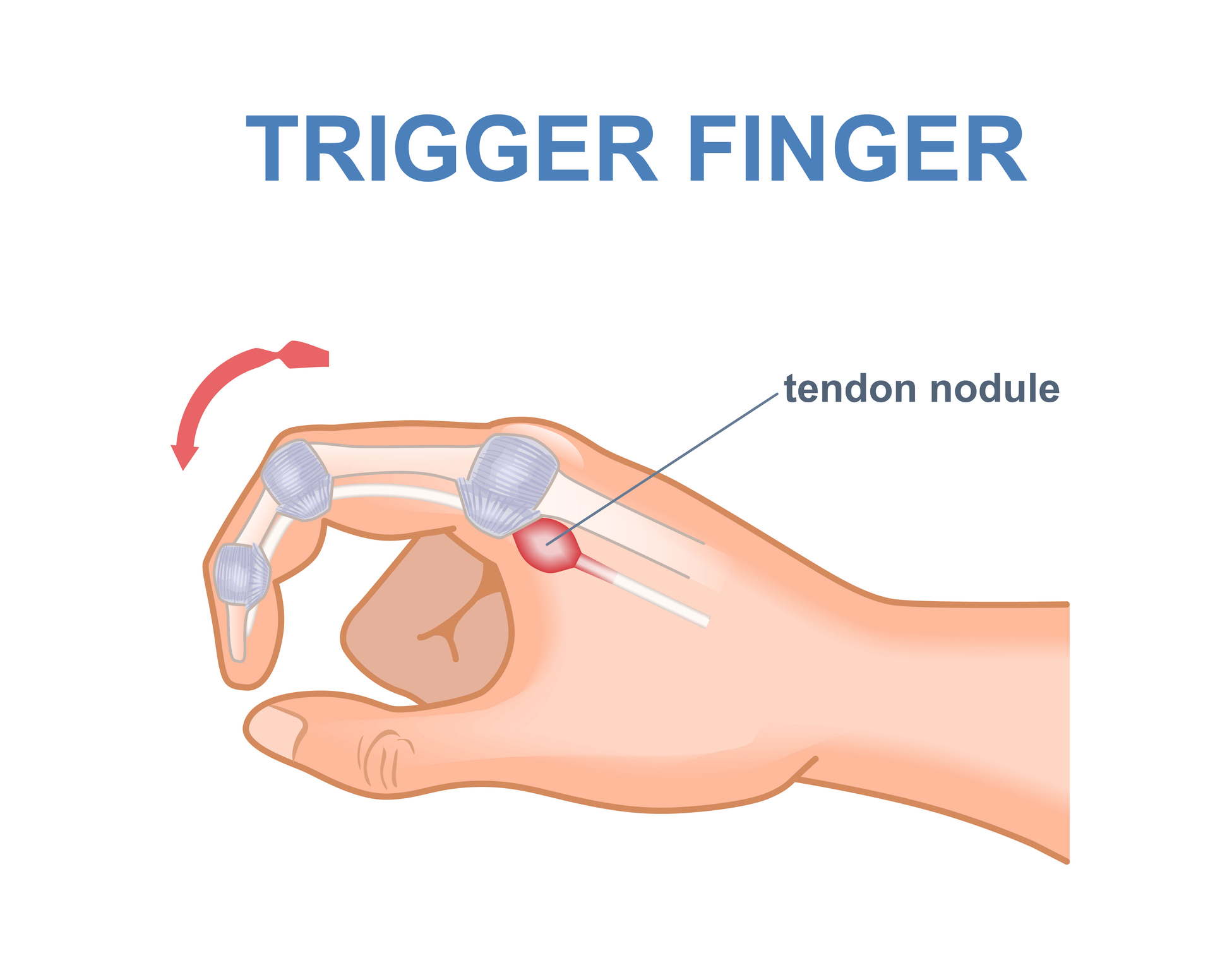What is Trigger Finger Release?
Trigger Finger Release is a surgical procedure designed to alleviate the pain and restricted movement caused by trigger finger (stenosing tenosynovitis). This condition occurs when the sheath surrounding a finger tendon becomes inflamed, causing the finger to lock or catch when bent. The procedure involves releasing the tight portion of the tendon sheath, allowing for smooth movement of the tendon and restoring normal finger function.

Why Might You Need Trigger Finger Release?
Trigger Finger Release may be recommended if you experience:
- Pain: Persistent pain in the affected finger or thumb, particularly when bending or straightening.
- Locking or Catching: The finger locks in a bent position and then suddenly pops straight.
- Stiffness: Stiffness and reduced movement, especially in the morning.
- Swelling: Swelling or a lump (nodule) at the base of the affected finger or thumb.
- Non-Responsive to Other Treatments: Condition that has not improved with non-surgical treatments such as splinting, steroid injections, or physical therapy.
Hear What Patients Say About Us . . .

5.0
I had minor surgery for trigger finger on 4/16/2024. It was one of the best experiences I've had in a long time. From the front desk to all the nurses, anesthesiologists, and of course, Dr. Bohm, I was treated with the best patient service. Being in the service industry myself, great service is needed, and when you receive at a high level, it goes a very long way. Thank you for treating me as a special patient!!!
Veronica M, Redford (Trigger Finger)

5.0
"I had been suffering from trigger finger for months, and Dr. Bohm’s expertise in hand surgery helped me regain full function. His care and attention to detail are unmatched. I couldn’t be happier with the results. If you need hand surgery, he’s the doctor to see!"
Sarah L., Novi (Trigger Finger)

5.0
"I had constant muscle pain in my shoulders that wouldn’t go away no matter what I tried. Dr. Anthony Oddo suggested a trigger point injection, and the results have been life-changing. He’s incredibly skilled and truly cares about his patients. Highly recommend him!"
— Susan R., Rochester, MI (Trigger Point Injection)

5.0
"I had constant shoulder and neck pain that wouldn’t go away, but Dr. Kevin Lee’s trigger point injection gave me instant relief. His care and precision are unmatched."
— Lisa C., Sterling Heights, MI (Trigger Point Injection)

5.0
"Imagine trying to button your shirt each morning and your finger just won’t cooperate—like a stubborn kid refusing to tie his own shoelaces! That was me until I met Dr. Bohm. He took one careful look, recognized my trigger finger problem immediately, and explained a release procedure that didn’t sound scary at all. A few weeks later, I’m zipping coats, playing cards, and shaking hands like I never skipped a beat. This doc truly gave me my grip on life back!"
— Alan R., Sterling Heights (Trigger Finger Release)
Previous
Next
Find a Hand Surgeon
Hand & Upper Extremity
Genesys Surgery CenterLivoniaView all
What Are the Steps in a Trigger Finger Release Procedure?
Preoperative Preparation
- Medical Evaluation: Comprehensive review of your medical history, symptoms, and previous treatments.
- Diagnostic Assessment: Physical examination and possibly imaging studies to confirm the diagnosis and plan the procedure.
- Informed Consent: Detailed discussion of the procedure, potential benefits, and risks.
During the Procedure
- Patient Positioning: You will be comfortably positioned to allow easy access to the affected finger.
- Local Anesthesia: The area around the affected finger will be numbed to minimize discomfort.
- Incision: A small incision is made in the palm near the base of the affected finger.
- Release of Tendon Sheath: The surgeon carefully cuts the tight portion of the tendon sheath, allowing the tendon to move freely.
- Closure: The incision is closed with sutures, and a sterile dressing is applied.
Postoperative Care
- Observation: Brief period of monitoring after the procedure to ensure there are no immediate side effects.
- Activity Guidelines: Instructions on caring for the incision and guidelines for gradually resuming normal activities.
- Pain Relief: Medications and tips for managing postoperative pain and swelling.

Recovery and Rehabilitation
Postoperative Care
- Immediate Effects: Many patients experience relief from locking and pain shortly after the procedure.
- Pain Monitoring: Keeping a diary of pain levels and finger function to track recovery progress.
- Follow-Up Appointments: Scheduled to monitor healing, remove sutures, and assess finger movement and strength.
Potential Complications
While Trigger Finger Release is generally safe, potential complications can include:
- Infection: Risk of infection at the incision site.
- Bleeding: Minor bleeding or bruising may occur.
- Nerve Damage: Rare but possible risk of temporary or permanent nerve damage.
- Stiffness or Recurrence: Stiffness or the possibility of trigger finger recurring in the same or other fingers.
Benefits of Trigger Finger Release in
Hand & Upper Extremity Management
- Significant Pain Relief: Reduction in pain and discomfort.
- Improved Functionality: Enhanced ability to move and use the affected finger.
- Quick Recovery: Short recovery period with minimal downtime.
- Enhanced Quality of Life: Improved overall well-being and ability to perform daily activities.

